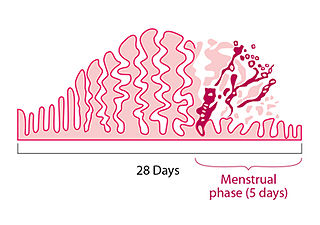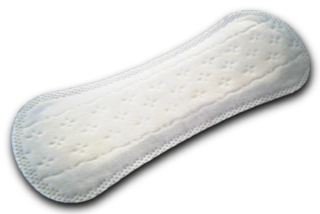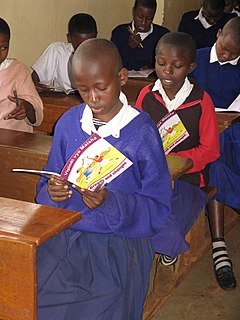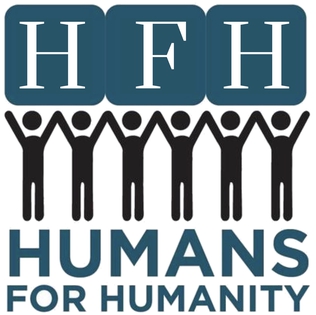
Menstruation is the regular discharge of blood and mucosal tissue from the inner lining of the uterus through the vagina. The menstrual cycle is characterized by the rise and fall of hormones. Menstruation is triggered by falling progesterone levels and is a sign that pregnancy has not occurred.

A tampon is a menstrual product designed to absorb blood and vaginal secretions by insertion into the vagina during menstruation. Unlike a pad, it is placed internally, inside of the vaginal canal. Once inserted correctly, a tampon is held in place by the vagina and expands as it soaks up menstrual blood. However, in addition to menstrual blood, the tampon also absorbs the vagina's natural lubrication and bacteria, which can change the normal pH, increasing the risk of infections from the bacterium Staphylococcus aureus, which can lead to toxic shock syndrome (TSS). TSS is a rare but life-threatening infection that requires immediate medical attention.

A menstrual cup is a menstrual hygiene device which is inserted into the vagina during menstruation. Its purpose is to collect menstrual fluid. Menstrual cups are usually made of flexible medical grade silicone, latex, or a thermoplastic isomer. They are shaped like a bell with a stem or a ring. The stem is used for insertion and removal, and the bell-shaped cup seals against the vaginal wall just below the cervix and collects menstrual fluid. This is unlike tampons and menstrual pads, which absorb the fluid instead.

A menstrual pad, or simply pad, is an absorbent item worn by women in their underwear when menstruating, bleeding after giving birth, recovering from gynecologic surgery, experiencing a miscarriage or abortion, or in any other situation where it is necessary to absorb a flow of blood from the vagina. A menstrual pad is a type of menstrual hygiene product that is worn externally, unlike tampons and menstrual cups, which are worn inside the vagina. Pads are generally changed by being stripped off the pants and panties, taking out the old pad, sticking the new one on the inside of the panties and pulling them back on. Pads are recommended to be changed every 3–4 hours to avoid certain bacteria that can fester in blood; this time also may differ depending on the kind worn, flow, and the time it is worn.

A pantyliner is an absorbent piece of material used for feminine hygiene. It is worn in the gusset of a woman's panties. Some uses include: absorbency for daily vaginal discharge, light menstrual flow, tampon and menstrual cup backup, spotting, post-intercourse discharge, and urinary incontinence. Panty liners can also help with girls who are having discharges and about to start their cycle. Pantyliners are related to sanitary napkins in their basic construction—but are usually much thinner and often narrower than pads. As a result, they absorb much less liquid than pads—making them ideal for light discharge and everyday cleanliness. They are generally unsuitable for the menstruation medium to heavy flow, which requires them to be changed more often.

Feminine hygiene products are personal care products used during menstruation, vaginal discharge, and other bodily functions related to the vulva and vagina. Products that are used during menstruation may also be called menstrual hygiene products, including menstrual pads, tampons, pantyliners, menstrual cups, menstrual sponges and period panties. Feminine hygiene products also include products meant to cleanse the vulva or vagina, such as douches, feminine wipes, and soap.

Plastic pants are devices worn over a diaper with the purpose of containing liquid or solid waste that could leak through the fabric. Today, plastic pants are usually made out of polyvinyl chloride (PVC) or polyurethane (PU), though, in some instances, latex rubber is still used. Latex rubber has significant drawbacks in these applications: it is easily damaged by rough handling, oils, creams, and ointments; it does not allow air to ventilate; it also makes a characteristic rustling noise when moved, which limits its use in situations where discretion is necessary.
Always is an American brand of menstrual hygiene products, including maxi pads, ultra thin pads, pantyliners, disposable underwear for night-time wear, and vaginal wipes. A sister concern of Procter & Gamble, it was first introduced in the United States in test markets in the spring of 1983, then nationally in May 1984. By the end of 1984, Always had also been introduced internationally in United Kingdom, Canada, France, Germany, and Africa.

Cloth menstrual pads are cloth pads worn in the underwear to collect menstrual fluid. They are a type of reusable menstrual hygiene product, and are an alternative to disposable sanitary napkins or to menstrual cups. Because they can be reused, they are generally less expensive than disposable pads over time, and reduce the amount of waste produced.

There are many cultural aspects surrounding how societies view menstruation. A menstrual taboo is any social taboo concerned with menstruation. In some societies it involves menstruation being perceived as unclean or embarrassing, inhibiting even the mention of menstruation whether in public or in private. Many traditional religions consider menstruation ritually unclean, although anthropologists say that the concepts 'sacred' and 'unclean' may be intimately connected.
Arunachalam Muruganantham (Padman) is a social entrepreneur from Coimbatore in Tamil Nadu, India. He is the inventor of a low-cost sanitary pad-making machine and is credited for innovating grassroots mechanisms for generating awareness about traditional unhygienic practices around menstruation in rural India. His mini-machines, which can manufacture sanitary pads for less than a third of the cost of commercial pads, have been installed in 23 of the 29 states of India in rural areas. He is currently planning to expand the production of these machines to 106 nations. The movie Period. End of Sentence. won the Academy Award for Best Documentary for the year 2018. The 2018 Hindi film Pad Man was made on his invention starring Akshay Kumar as him.
Menstrual Hygiene Day is an annual awareness day on May 28 to highlight the importance of good menstrual hygiene management (MHM) at a global level. It was initiated by the German-based NGO WASH United in 2013 and observed for the first time in 2014.
A Silky Cup is a "Clinically Tested" feminine hygiene product which is made of thermoplastic elastomer (TPE), shaped like a bell and is flexible. It is worn inside the vagina during menstruation to catch menstrual fluid (blood). About every 4–12 hours, the menstruating woman removes the Silky cup from her vagina, empties the collected menstrual blood into a toilet or sink, washes the cup under running water and inserts it again. At the end of the monthly period, the cup can be sterilized, usually by boiling in water. Unlike tampons and pads, the cup collects menstrual fluid rather than absorbing it.

Tampon tax is a value-added tax or sales tax charged on tampons and other feminine hygiene products while other products considered basic necessities are granted tax exemption status. The term tampon tax is not an official designation but instead a popular term used to call attention to the issue.

Days for Girls (DfG) is a nonprofit organization that prepares and distributes sustainable menstrual health solutions to girls who would otherwise miss school during their monthly periods. DfG was founded in 2008 by American woman Celeste Mergens. After visiting an orphanage in Nairobi, Kenya, she discovered that menstruating girls stayed in their dormitories for days, sitting on cardboard to absorb their flow, because they could not afford feminine hygiene products. Her first response was to organize donations of disposable sanitary pads, but she realized that this was not a sustainable solution — and the girls had no way to dispose of used pads. She then developed the idea of creating washable, reusable pads and providing the girls with a personal kit of all they would need to continue their schooling with hygiene and dignity. By 2018, the DfG Kits and health education programs had reached more than one million girls and women in over 100 countries.

Anurag Chauhan is an Indian social worker and founder of Humans For Humanity, a non-governmental organization (NGO) headquartered in Dehradun, India. He is widely known for social work, particularly with regards to menstrual hygiene. The WASH project started by him has reached over 3 million women in over 6 states in last 5 years.

Period. End of Sentence. is a 2018 documentary short film directed by Rayka Zehtabchi about Indian women leading a quiet sexual revolution. The film stars Arunachalam Muruganantham, Shabana Khan, Gouri Choudari, Ajeya, and Anita. The documentary short follows a group of local women in Hapur, India, as they learn how to operate a machine that makes low-cost, biodegradable sanitary pads, which they sell to other women at affordable prices. This not only helps to improve feminine hygiene by providing access to basic products but also supports and empowers the women to shed the taboos in India surrounding menstruation – all while contributing to the economic future of their community. The film is inspired by the life of Arunachalam Muruganantham, a social activist from Coimbatore, India.

Menstrual hygiene management (MHM) or menstrual health and hygiene (MHH) refers to access to menstrual hygiene products to absorb or collect the flow of blood during menstruation, privacy to change the materials, and access to facilities to dispose of used menstrual management materials. It can also include the "broader systemic factors that link menstruation with health, well-being, gender equality, education, equity, empowerment, and rights". Menstrual hygiene management can be particularly challenging for girls and women in developing countries, where clean water and toilet facilities are often inadequate. Menstrual waste is largely ignored in schools in developing countries, despite it being a significant problem. Menstruation can be a barrier to education for many girls, as a lack of effective sanitary products restricts girls' involvement in educational and social activities.

Humans For Humanity (HFH) is a non-governmental organization, founded by renowned social worker Anurag Chauhan, headquartered in Dehradun, India. It is working to bring awareness about menstrual health, hygiene among women across India. It is providing health, hygiene and comfort to women, especially in poverty-stricken and rural areas in India. The organization empowers women by educating women and young girls on menstruation and menstrual hygiene, and by conducting workshops to produce low-cost sanitary pads. The WASH project started by Humans For Humanity has reached over 3 million women in over 6 states in India in the last 6 years, as of October 2020.

Period underwear are absorbent clothing designed to be worn during menstruation.















